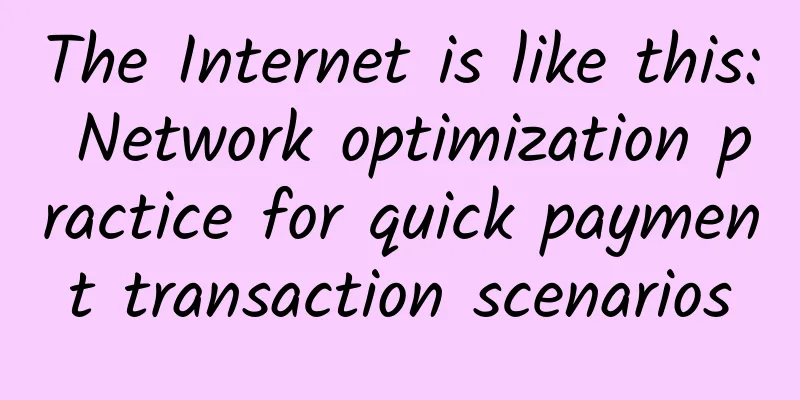How to build supply chain finance modernization from Shengye

|
The report of the 20th National Congress of the Communist Party of China, which just concluded, mentioned the need to develop the real economy. Promoting the development of the real economy requires the vitality of finance. Supply chain finance is a very effective carrier that can promote the development of the real economy, because it is connected to the industrial chain and supply chain on the one hand, and to finance on the other hand. In the process of promoting the development of the real economy, the supply chain finance model has natural advantages. Supply chain finance is an innovative business that is based on industrial supply chain operations, and forms supply chain credit based on transactions, logistics and other businesses and information generated between supply chain participants, thereby providing comprehensive financing services to small and medium-sized enterprises in supply chain operations. As an important means to promote the development of industrial chain supply chains, supply chain finance has attracted attention from all walks of life. The 2021 Government Work Report mentioned "innovative supply chain financial service models". In 2022, the China Banking and Insurance Regulatory Commission issued the "Notice on Further Promoting the High-Quality Development of Financial Services for the Manufacturing Industry", requiring further strengthening of financial support and optimizing financial services in key areas. The release of these policies has promoted the in-depth development of supply chain finance in all walks of life and greatly alleviated the financing difficulties of small and medium-sized enterprises. The development history of supply chain finance in my country Generally speaking, small, medium and micro enterprises are the weak members in the supply chain. These enterprises usually face financial pressure brought by the strong position of core enterprises - they have to supply goods to core enterprises and bear the delay of accounts receivable; or they pay funds to core enterprises in advance in the form of distribution and deposit before sales begin. Banks and other financial institutions will refuse to lend to these enterprises because of many factors such as small scale, insufficient collateral, difficult to control production and operation, and poor ability to resist economic fluctuations. In summary, although these enterprises share the financial risks of core enterprises, they do not receive credit support from core enterprises. Supply chain finance was born in this context. According to Professor Chen Xiangfeng, professor and doctoral supervisor at the School of Management of Fudan University and director of the International Supply Chain Finance Research Center of Fudan University, China's supply chain finance originated around 2000 and can be divided into four stages: The first stage was from 2000 to 2008, when the seeds of supply chain finance began to grow in China. In that historical period when the Internet was still in its infancy, supply chain finance business was mainly concentrated offline, mainly with inventory pledge loans provided by financial institutions. The second stage was from 2009 to 2015. As the financial crisis in 2008 made many companies more short of funds, more and more companies began to pay attention to supply chain finance, hoping to shorten the capital occupation cycle with the help of this financing method. The third stage is from 2015 to 2018. With the rapid development of Internet technology, online supply chain finance models have begun to take shape, bringing opportunities for "mass entrepreneurship and innovation". However, the problems that have plagued the development of supply chain finance still exist. Enterprises within the supply chain cannot fully trust the shared information, resulting in a waste of opportunity costs. Due to the large number of participants in supply chain finance and the relatively long industrial chain involved, coupled with the different attributes and characteristics of different vertical and subdivided industrial chains, banks still have doubts about the debt repayment ability of small and medium-sized enterprises without real-time data support and credit confirmation. Therefore, enterprises generally believe that supply chain finance should operate under the platform model. The fourth stage is from 2018 to the present. The construction of supply chain financial service platform is different from the previous supply chain model dominated by core enterprises. Instead, a variety of innovative supply chain financial models have emerged. At the same time, more and more digital technologies are applied to the risk control management of supply chain finance, which not only ensures the security of information, but also ensures the transparency and reliability of information, allowing supply chain finance to enter a new development period. Modernization of supply chain finance Since 2020, supply chain finance has undergone another significant change, and has been linked to the green development, sustainable development concepts, and industrial chain security advocated by the country. Today, the characteristics of supply chain finance can be summarized as "modernization", that is, "supply chain finance modernization", which is specifically reflected in the two aspects of Chineseization and modernization. The Sinicization is reflected in the fact that supply chain finance must be connected with the country's new development concept of "innovation, coordination, greenness, openness and sharing", and integrated with the requirements of "accelerating the construction of a new development pattern and focusing on promoting high-quality development", such as: forming a new development pattern with the domestic big cycle as the main body and the domestic and international double cycles promoting each other. The modernity is reflected in the pressure that supply chain finance has to face from the COVID-19 pandemic and international competition. In this context, supply chain finance should pay more attention to the sustainability and risk resistance of financial resources and industrial chains, and strive to improve the resilience and security level of the industrial chain and supply chain. In short, the modernization of supply chain finance is mainly reflected in five aspects: digitalization, innovation, greenness, security, and high added value. Solving supply chain finance problems for small and medium-sized enterprises with digitalization The key advantage of supply chain finance is to effectively control risks by using the full authenticity of supply chain information, so the authenticity, integrity and effectiveness of information are very high. Due to insufficient information exchange and sharing, the interconnection between the parties is relatively low, which leads to the fragmentation of transaction information in the industrial chain, the creation of information islands, and the difficulties in information confirmation and authenticity verification, which increases the credit risk of banks and other financial institutions. The existence of such information islands makes small and medium-sized enterprises in the supply chain always in a weak position, and small and medium-sized enterprises at lower levels cannot enjoy the convenience brought by supply chain finance, which greatly reduces the coverage and operation effect of supply chain finance. "Digitalization is a way to break down information silos. In the Internet era, the development of platform economy and digital economy is also aimed at empowering small and medium-sized enterprises. Core enterprises, financing enterprises, financial institutions, third-party logistics companies, financial information service platforms, financial technology companies and other types of enterprises are also working hard to solve the financing problems of small and medium-sized enterprises." said Professor Chen Xiangfeng. Professor Chen Xiangfeng believes: "With the support of intelligent risk control strategies, Shengye provides small and medium-sized enterprises with a variety of innovative solutions covering the entire supply chain settlement cycle. Traditional financial institutions mainly deal with the stage from the confirmation of ownership of core enterprises to actual payment, while Shengye moves the financing node forward through systematic and data-based management to cover the entire supply chain. Based on its in-depth insight into industry rules, Shengye applies a large number of cutting-edge technologies to ensure the controllability of risks. In addition, with its own supply chain scenarios, Shengye has gotten rid of its dependence on the credit and confirmation of ownership of core enterprises, and has transformed from an asset 'porter' to a 'creator' of high-quality assets. When talking about digital technologies ABCDI (artificial intelligence, blockchain, cloud technology, big data, and the Internet of Things), Professor Chen Xiangfeng pointed out: "These technologies are very important, such as the Internet of Things technology. With the continuous advancement of the Internet of Things technology, all relevant links in the supply chain are in a state of 'visual tracking'. Shengye's smart construction site solutions use smart devices such as video surveillance, tower crane monitoring, weighbridge monitoring, and foundation pit monitoring to view the supplier's transaction process, laying the foundation for verifying the authenticity and rationality of the underlying transactions, which is of great risk control value. Supply chain finance is the comprehensive application of multiple technologies." Driven by digital construction, a supply chain finance application loop of scenario - data - information - knowledge - wisdom - innovation has been constructed, and it is continuously improving in a spiral step-by-step manner. Shengye: Follow the law of changes in customer value As a supply chain technology platform, Shengye currently focuses on two major business sectors: industrial Internet and digital finance. At the beginning of this year, Shengye completed the adjustment and upgrade of the group name and brand image, and its positioning has also changed from the initial financial services company and supply chain financial technology platform to the current supply chain technology platform. With the change in positioning, Shengye's development direction has also changed from "profit and survival" to "technology-led and ecological construction." "The law of enterprise development is the law of changes in customer value. Shengye provides better services to upstream and downstream enterprises in the supply chain, and then allows them to participate together to form a supply chain ecosystem. From the perspective of enterprise value chain management, Shengye is very consistent with this law of development." said Professor Chen Xiangfeng. Shengye is the first in the industry to provide an overall solution of "Industrial Internet + Digital Finance", forming a platform strategy to create new value for small, medium and micro enterprises, core enterprises and financial institutions. Professor Chen Xiangfeng pointed out: "Shengye uses the industrial SaaS platform and Internet of Things technology (smart construction sites, hospital SPD, SaaS systems) to collect front-end data and provide data support for supply chain services for small, medium and micro enterprises. The characteristics of Shengye's services are mainly reflected in three aspects. First, it focuses on serving the supply chain financial business of core enterprises at the head of the industrial chain; second, industrial Internet solutions such as smart construction sites and hospital SPD have laid a solid foundation for providing customers with precise, refined and digital supply chain financial services, and also provided reliable guarantees for high-efficiency and high-level risk management; third, across the three major fields of infrastructure, medicine and energy, although the customer groups and customer needs are different, the underlying and cloud service logic is the same. Cross-border also provides channels and conditions for accumulating high-quality data on a larger scale, and provides new opportunities and new space for the development of more innovative products, which is conducive to the sustainable development and high-quality development of the company itself." In terms of risk control, Professor Chen Xiangfeng pointed out: "Shengye's core risk control logic is also reflected in the data-driven intelligent risk control mechanism, including the use of multi-dimensional data to achieve anti-fraud, which is specifically reflected in the strict verification of transaction authenticity, not relying on a single data source, not relying on simple legal terms, and using the system to cross-verify data from multiple sources to ensure that the information verification of data from multiple sources is consistent, thereby verifying the authenticity of transaction data. On the basis of verifying the authenticity of the transaction, it is also necessary to judge the rationality of the transaction. Based on a deep understanding of the industry and historical data tracking, the rationality of multiple factors such as transaction price, quantity, account period, and payment status are verified and evaluated to ensure that the transaction is reasonable rather than colluding to falsify. This is also an important reason why Shengye has a high level of risk control and a relatively low non-performing rate of financing." Conclusion According to the 2022 interim results announcement released by Shengye at the end of August this year, as of June 30, 2022, Shengye's digital financial solution revenue was RMB 302 million, a year-on-year increase of 51%. The average daily balance of supply chain assets was approximately RMB 8.3 billion, a year-on-year increase of approximately 52%. The cumulative scale of supply chain assets processed was approximately RMB 145.6 billion, an increase of 27% over the same period last year. The cumulative number of customers on the platform reached 11,413, an increase of 39% over the same period last year. The reason why Shengye has achieved such results is that Shengye has realized the all-round and multi-angle connection between supply chain finance and industries and entities, and truly used technological means to make the supply more trendy to meet the needs of the industry. Only in this way can supply chain finance truly return to entities and empower entities. |
<<: 2022 UBBF|Huawei's optical transmission demonstration site is on display
>>: Can Chrome DevTools' Network be used like this?
Recommend
What role does Wi-Fi-6 play in the field of industrial IoT?
5G technology has enough advantages to support so...
The role of 5G in realizing the next generation of smart cities
5G can improve the quality and performance of urb...
The “unlimited data” package is secretly deducting money, and even the Ministry of Industry and Information Technology can’t stand it anymore!
Living in this era of the Internet, where you can...
80VPS 50% off all VPS, Hong Kong CN2 line KVM monthly payment starts from 45 yuan
80VPS has launched a 50% discount coupon this mon...
[Black Friday] RAKsmart: San Jose servers start at $30/month, Los Angeles servers start at $60/month, Japan servers start at $99/month
November is a busy month. The Double 11 promotion...
Huawei Releases New Intelligent Network Equation: AI+SoftCOM = Autonomous Network That Never Fails
[51CTO.com original article] "Building a ful...
Don't rush to upgrade to 5G, this operation can make your 4G speed 10 times faster
Remember that at the beginning of this month, 5G ...
IMIDC Japan multi-IP server from $88/month, E3-123x/16GB/512G SSD/30M bandwidth
IMIDC is a local operator in Hong Kong. The busin...
DediPath Independence Day Promotion: 40% off all VPS hosts, New York dedicated servers starting from $35/month
DediPath launched a US Independence Day promotion...
Detailed explanation of remote method invocation RMI, which is very similar to the idea of RPC
[[268642]] Definition of RMI RPC (Remote Procedur...
Hosteons July promotion: Double memory or upgrade to 10Gbps port, starting at $16 per year, 5 data centers in Los Angeles/Dallas
Hosteons has just launched a promotion for July. ...
5G development is not going smoothly, the number of fake 5G users has become the mainstream, and the three major operators have become the "root of the problem"
As we all know, Huawei's 5G technology is the...
Wi-Fi Alliance launches next-generation WPA3 security certification program
[51CTO.com original article] On June 26, the Wi-F...
McDonald's uses 5G as a gimmick to sell chicken, but the real 5G still depends on the Internet of Things
In the past two days, a marketing campaign that o...
OlinkCloud: San Jose dedicated server 60% off monthly payment starting at $71.4, triple-network AS9929 line
Olink.Cloud is a site under the old host company ...









